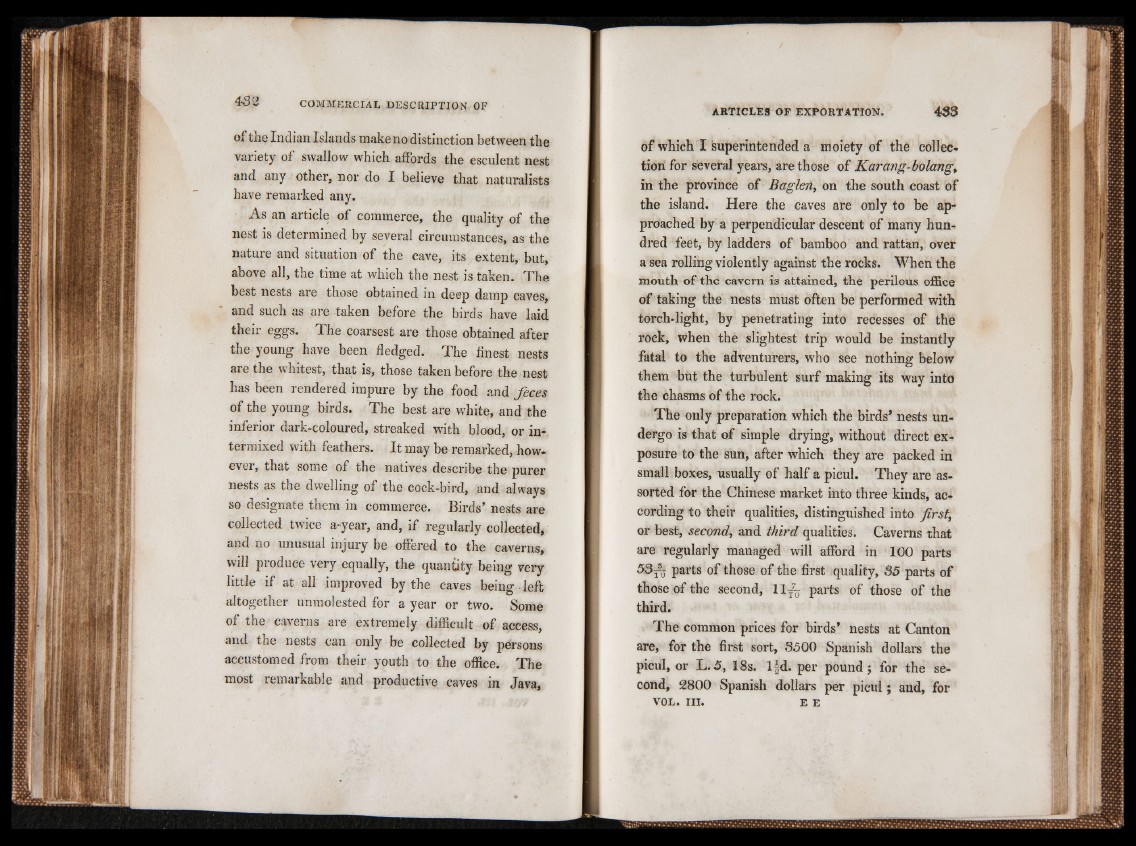
of tne Indian Islands make no distinction between the
variety of swallow which affords the esculent nest
and any other, nor do I believe that naturalists
have remarked any.
As an article of commerce, the quality of the
nest is determined by several circumstances, as the
nature and situation of the cave, its extent, but,
above all, the time at which the nest is taken. The
best nests are those obtained in deep damp caves,
and such as are taken before the birds have laid
their eggs. The coarsest are those obtained after
the young have been fledged. The finest nests
are the whitest, that is, those taken before the nest
has been rendered impure by the food and feces
of the young birds. The best are white, and the
inferior dark-coloured, streaked with blood, or intermixed
with feathers. It may be remarked, however,
that some of the natives describe the purer
nests as the dwelling of the cock-bird, and always
so designate them in commerce. Birds’ nests are
collected twice a-year, and, if regularly collected,
and no unusual injury be offered to the caverns,
will produce very equally, the quantity being very
little if at all improved by the caves being-left
altogether unmolested for a year or two. Some
of the caverns are extremely difficult of access,
and the nests can only be collected by persons
accustomed from their youth to the office. The
most remarkable and productive caves in Java,
of which I ¡superintended a moiety of the collection
for several years, are those of Karang- bolang,
in the province of Baglen, on the south coast of
the island. Here the caves are only to be approached
by a perpendicular descent of many hundred
feet, by ladders of bamboo and rattan, over
a sea rolling violently against the rocks. When the
mouth of the cavern is attained, the perilous office
of taking the nests must often be performed with
torch-light, by penetrating into recesses of the
rock, when the slightest trip would be instantly
fatal to the adventurers, who see nothing below
them blit the turbulent surf making its way into
the chasms of the rock.
The only preparation which the birds’ nests undergo
is that of simple drying, without direct exposure
to the sun, after which they are packed in
small boxes, usually of half a picul. They are assorted
for the Chinese market into three kinds, according
to their qualities, distinguished into first,
or best, second, and third qualities. Caverns that
are regularly managed will afford in 100 parts
53^j parts of those of the first quality, 35 parts of
those of the second, 11^ parts of those of the
third.
The common prices for birds’ nests at Canton
are, for the first sort, 3500 Spanish dollars the
picul, or L.5, 18s. lfd. per pound; for the second,
2800 Spanish dollars per picul; and, for